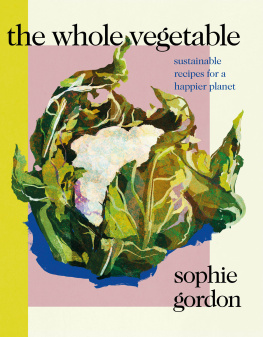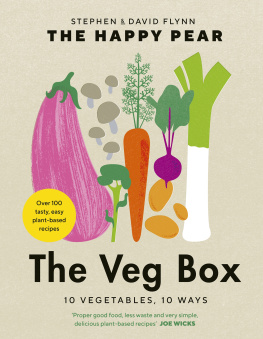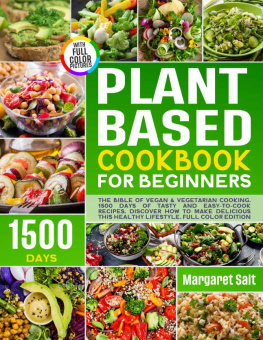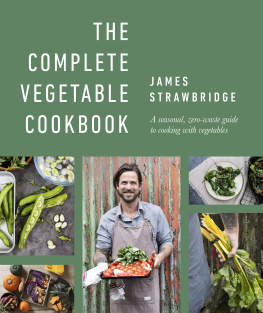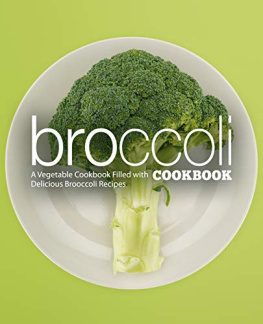the whole vegetable
s ophie gordon
Photography by
Issy Croker
Illustrations by
Holly Ovenden

introduction
Im commonly known among friends for being an obsessive vegetable hoarder. A quarter of a pepper sitting in the fridge, carrots in a jar of water, leaves trimmed and bagged: youll find me roasting up some cauliflower leaves with chilli flakes, salt and lemon juice, or using those inedible onion skins or vegetable peelings for a trusty homemade stock. Wherever I am, Im pretty good at whipping something up based on whats in the fridge or cupboard, to make delicious nourishing recipes from what seems like nothing.
Weve become fixated on using multiple ingredients in our meals from a ready meal with an ingredients list too long to read, to the belief that a dinner party means buying 30 new items from a supermarket. Im here to show you that using fewer ingredients doesnt mean compromising on taste; in fact, by eating seasonally, you will create dishes that are vibrant and full of flavour because the produce is at its peak!
Every recipe in this book has been created with the idea of making use of the whole vegetable. I encourage you to not throw away what you might normally, saving those scraps to be re-worked into another dish or put into your stock box for later. What doesnt get used can then of course be composted. There are lots of ways you can adapt the recipes to suit your style or taste, as well as where you are in the world, making use of whats in season or what the weather may be like.
This approach sums up my way of cooking to a tee. Im passionate about (and slightly obsessed with) the minimization of waste, taking the not-so-ordinary or usually discarded parts of a fruit or vegetable and using them to their full potential and even to our advantage. Homemade stocks, vegetable-top pestos, broccoli chops, salty roasted leaves, the works. I believe fruit and vegetables should be celebrated, enjoyed with minimal preparation or fuss and simply enhanced with little more than a pinch of salt, a grind of pepper, a drizzle of olive oil or a glug of balsamic vinegar. Making vegetables the star feature of a recipe brings them tbaso life, paired perfectly with wholegrains, healthy fats and good-quality oils, sweet and savoury vinegars, natural sugars, fresh herbs and other seasonings. I aim to balance textures, tastes and nutrients through my cooking, inspiring a simpler way to go about eating, lower your overall waste and improve your general attitude towards food.
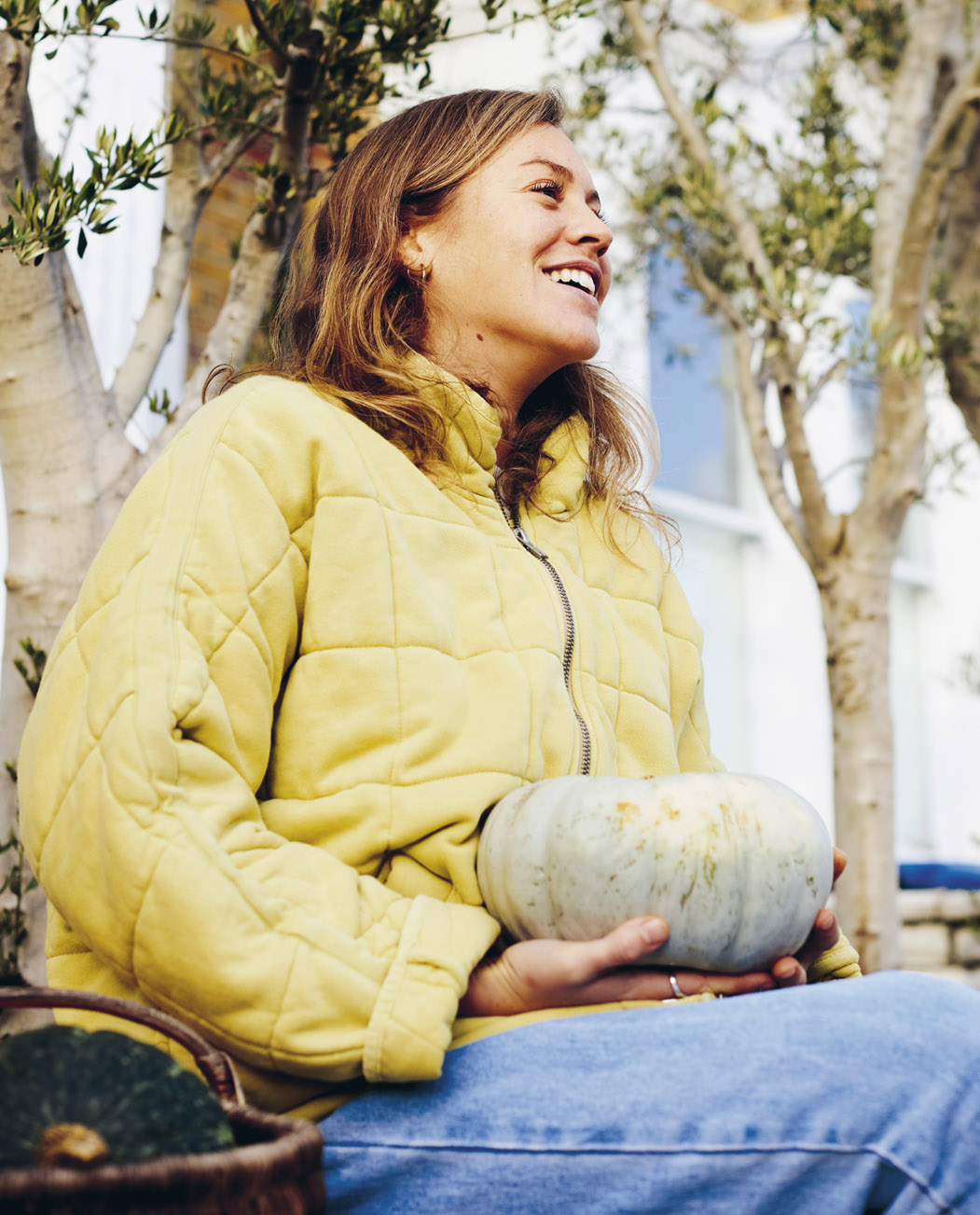
Cooking and eating seasonally
I am a true fanatic when it comes to fresh ingredients, a sucker for using the best in season produce. Of course, it has to be achievable, and the best way to eat seasonally is to shop local, supporting smaller businesses, farms, markets and so on, where youll find everything from vibrant freshly picked cherries to carrots with their tops and kohlrabi with their shoots, and even olive oil with just a simple slinky label, made locally at its best.
Eating seasonally makes us more connected to what we eat: foods are fresher and tastier when picked just at the right moment to make that perfect summer salad or that warming winter crumble. In the summer, our bodies crave fresh foods with higher water content, such as cucumbers or tomatoes, while in the winter we crave more starchy, rich and grounding foods like potatoes, pumpkins and beetroots. Cooking seasonally also means better flavours the peas in April always taste a little sweeter and the sweetcorn in July is the most naturally buttery thing going and you soon start to associate these tastes with the time of the year.
As well as eating produce seasonally for its enhanced and superior flavour, doing so can help us support the planet. It takes resources to grow food; a lot of maintenance goes into growing and tending to crops. Seasonal eating helps to lower greenhouse gas emissions, in turn reducing our carbon footprint. Weve all experienced those tasteless tomatoes, stringy avocados, bitter courgettes or sugar snap peas that are far from sweet. Its not uncommon for produce to taste different when its been through environmental stress like high temperatures, drought, floods, dubious practices or even just simply been picked before it was ready, for importing purposes. The more seasonally we eat and the more support we give to local producers, the more efficient things will be in the long run as demands change, chains shorten, and that extra 1 is knocked off those juicy berries we so fondly love, when buying them in season. Seeing the same produce 365 days of the year shouldnt be normal, whereas shopping locally and eating seasonally should be normal, and indeed it once was, so lets bring it back again. A lot of love goes into the process from local farmers and growers, so we should celebrate and relish the natural flavours, textures and sizes of produce in its prime.
I am forever dreaming about one day having my own vegetable garden, growing almost all of what I eat, seasonally. But for now, taking the time to shop at markets and local grocers, and to grow my own herbs (with a little rogue foraging here and there Im a sucker for wild garlic and elderflower) is the next best thing. As for the rest, I either buy in bulk or from zero-waste stores, filling up on what I need when I need it.

